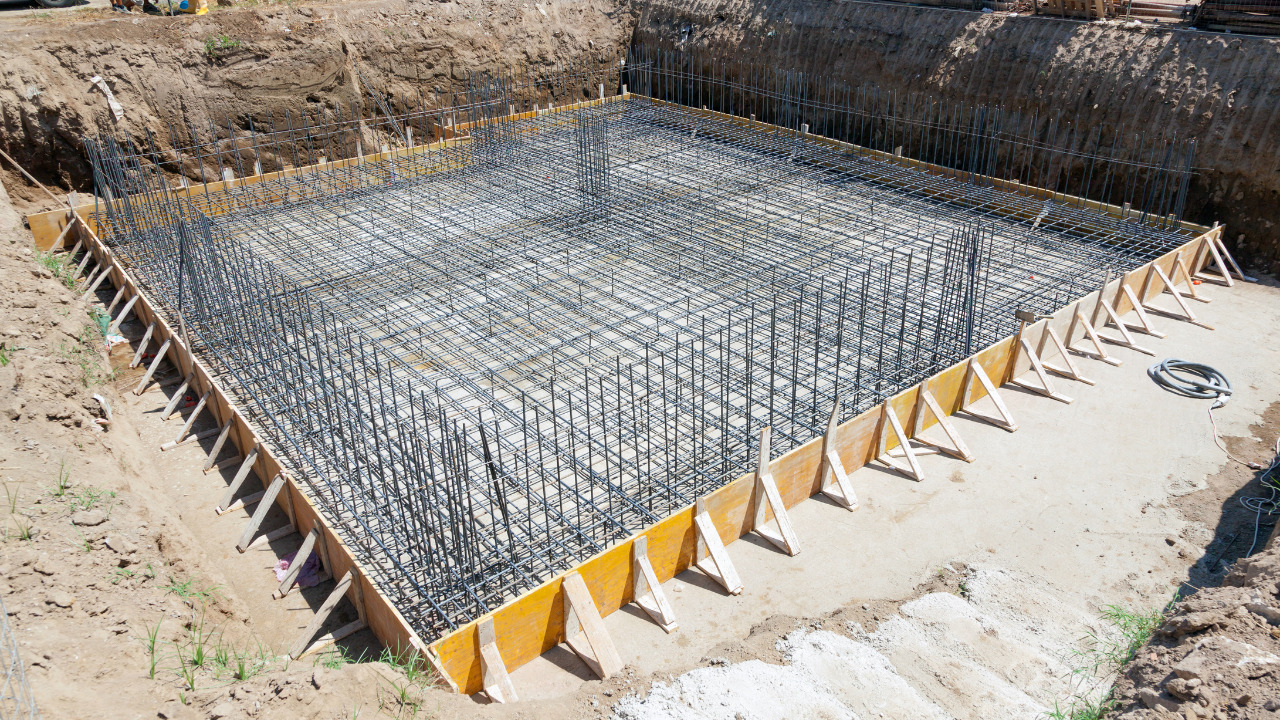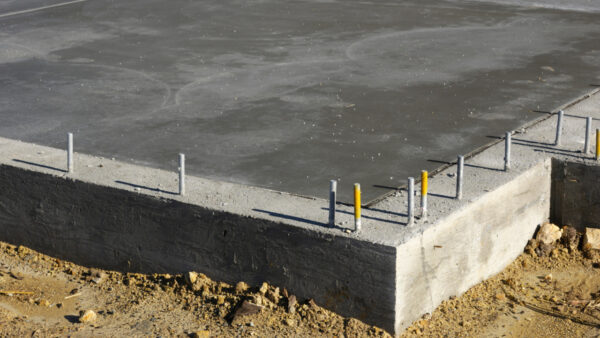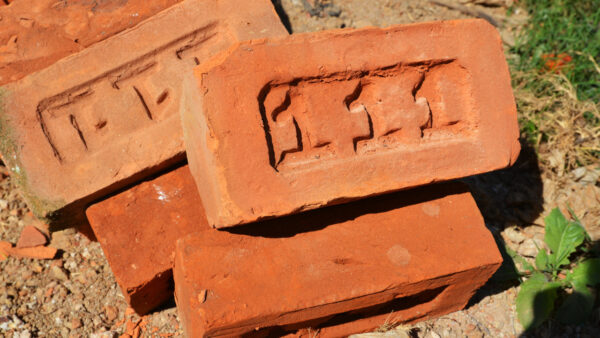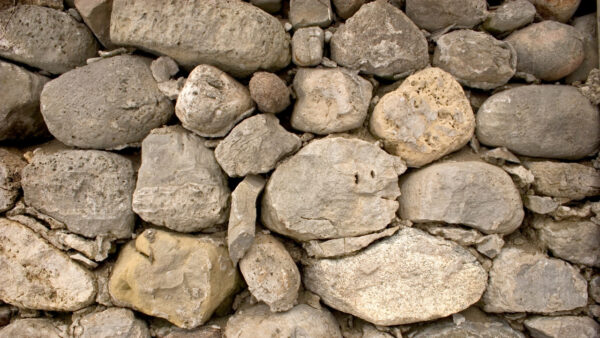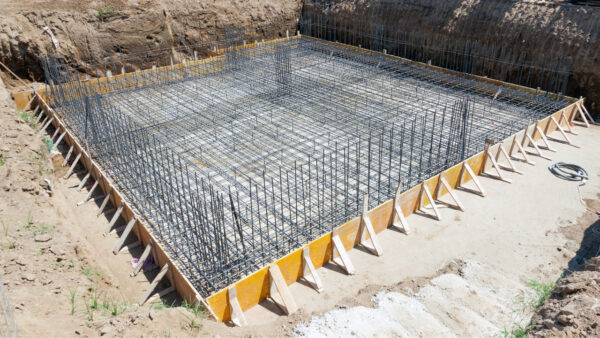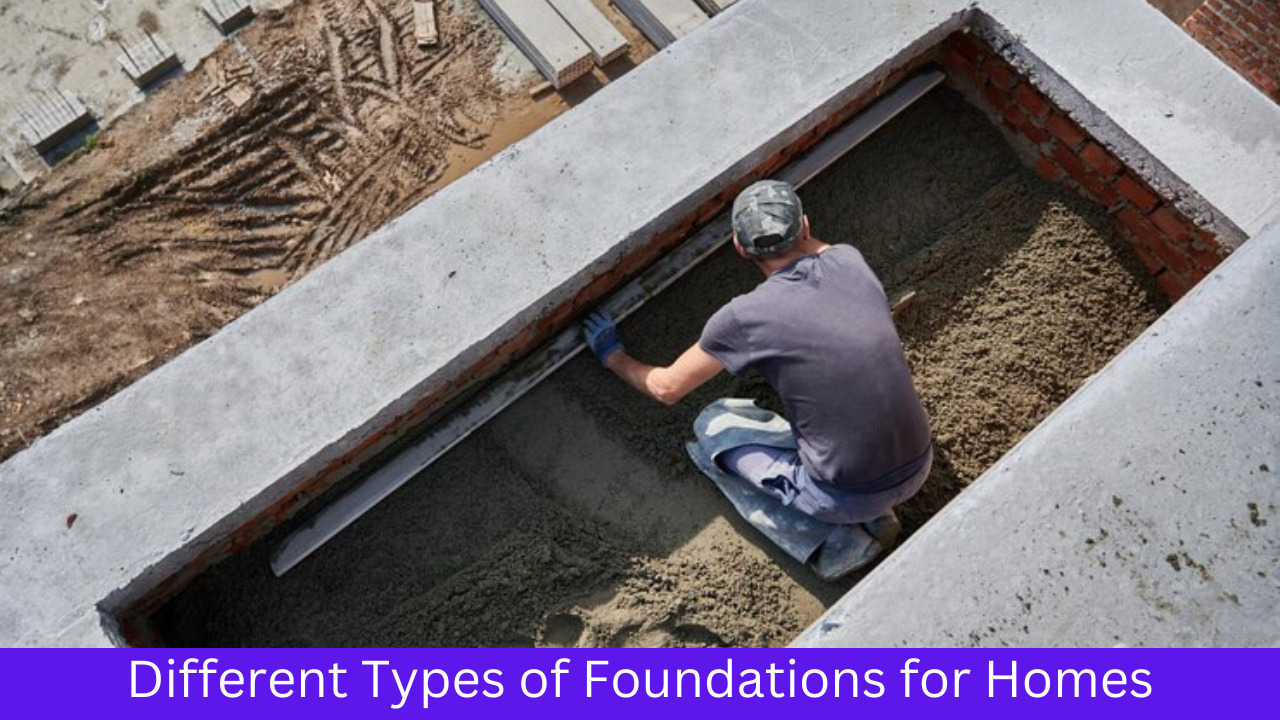Table of Contents
What is Meant by Foundation of a Structure?
Whenever a structure is to be built on ground, its construction cannot simply begin from the ground level. The reason being that firstly, the natural ground is uneven and offers little friction and secondly, the structure will not remain stable for a long time and any lateral force will topple it or overturn it about its base.
Therefore, it is important to construct a substructure below the ground level and strength it such that it not only imparts stability to the superstructure but also makes it capable to bear the applied loading. This substructure of a building is termed as its foundation.
Foundations of buildings need to be strong and durable and they should be capable of bearing the applied pressure. Depending upon the intensity of applied loading, we have different types of foundations made from different building materials.
Apart from the structural design of foundations, the type of material you choose is an important decision to make. Most of the buildings have shallow foundations made from concrete or masonry. However, for large projects, a detailed site investigation and a very strong foundation base are necessary.
Why Should Structures have Sound Foundations?
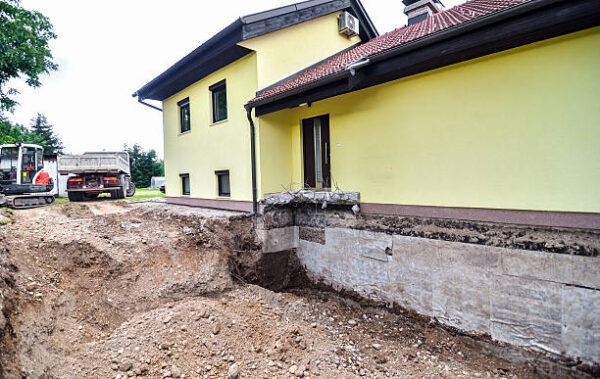
Imagine constructing a wall or column on the ground without making provision for its foundation. Even if you embed the column or wall a few feet below the ground level, the structure’s loading will punch it deeper into the ground. This is because the contact dimensions of wall or column are very less and once the structure is brought to serviceability, the increased pressure due to less contact area will cause them to punch into the ground.
Therefore, the basic concept of a foundation is to provide an enlarged area underneath your superstructure (wall, column, etc.). The enlargement of the base area of a wall or column reduces the contact pressure between the foundation and soil. This prevents excessive settlement and shear failure.
It is important for buildings and other structures to have a sound foundation for the following reasons;
- A sound foundation ensures the safety and stability of structure and will prevent it from collapsing, tilting, overturning, sliding or other failure types that tend to decrease the serviceability of the structure.
- A sound foundation also ensures that the building or structure will remain standing and functional for its service life.
- It also helps protect the building from environmental hazards such as earthquakes, flooding, high lateral wind forces, etc.
- A good foundation helps prevent structural damage caused by settlement, cracking, etc.
- Sound foundations also maintain the value of the building over time. Any building that has a poor or weak foundation will end up in failure in case of unanticipated circumstances.
Types of Foundation Building Materials
-
Concrete
Concrete is the most widely used foundation material for all types of foundations, be it a shallow foundation or deep foundation. The relative proportions of various ingredients of concrete (cement, sand, crushed stones, water) can be varied to produce concrete foundations of different strengths and load-bearing capacities.
The foundations made from concrete may or may not be reinforced. Raft or mat foundations are heavily reinforced and used when either the neighboring soil is weak or the applied pressure is very large.
In addition, concrete is also an excellent material for deep foundations such as piles, caissons, etc. that are also reinforced with steel and extend to a greater depth below the ground. The purpose of deep foundations is to bear heavy loading as in case of a bridge, flyover, etc.
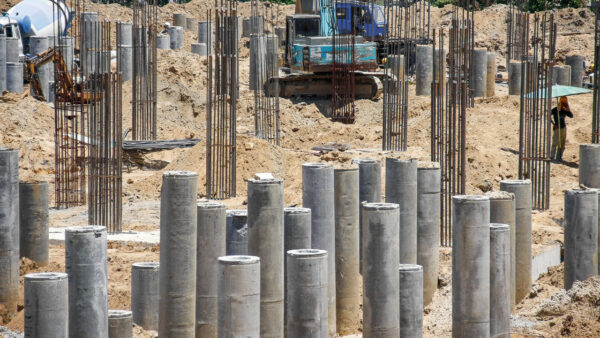
Pile Concrete Foundation
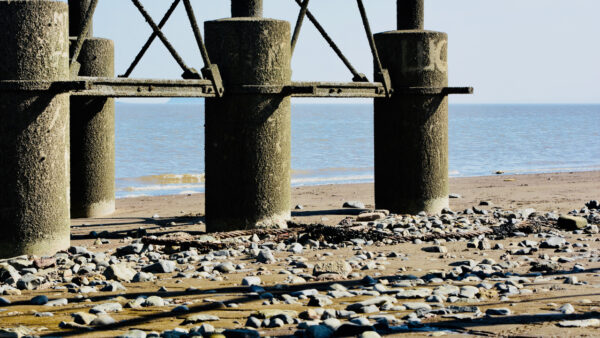
Concrete Pier Foundation
The use of concrete is various shallow foundations has made it a versatile foundation material. In this case, either spread foundations, strip foundations, or strap foundations may be provided.
In case of spread foundations, a concrete pad is placed underneath the columns that extend into the ground and rest on the pads. For small structures, the concrete pads are made from lean concrete (without any reinforcement) and depending upon the dimensions of the column, the shape and size of the pad is designed.
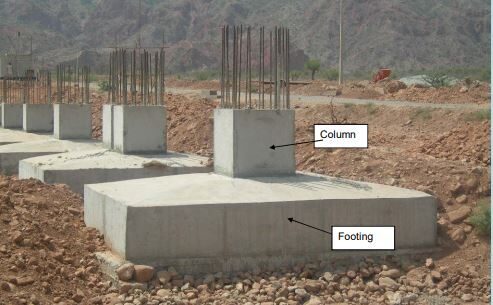
Spread Foundation
Strip or continuous concrete foundations made from concrete are provided underneath walls and extend along the length of the wall. The wall can either be a masonry wall or a concrete wall.
Strap foundations are also made from concrete and comprise two spread foundations connected by a strap beam. This is used to prevent overturning if load on any one of the spread foundations is heavier than that on the other.
Precast concrete blocks laid in mortar can also be used a foundation material.
Concrete slab-on-grade foundation consists of pouring concrete directly onto the ground and this foundation type may be preferred for warmer climates. Similarly, you may also design a poured wall foundation. In this type, concrete in poured to form walls that act as foundation.
-
Masonry
Masonry or brick foundations are very common for residential buildings and are mostly used for structures not subjected to heavy loading. They are strong and durable and provide good insulation.
Masonry foundation is generally provided in layers and the foundation area increases as we move in the downward direction. These types of foundations are not preferred for massive structures and in areas that are prone to earthquakes or other seismic events.
-
Soil
Well-graded and well-compacted soil may or may not be made from a fill material can also be used as a foundation material. The properties of the soil are to be considered carefully because all the structures we build over the Earth’s surface, the pressure eventually gets distributed to the soil.
In addition, the design of any foundation largely depends on the soil conditions prevalent at the construction site. Collapsible soils such as peat or muck cannot bear even the smallest structural loads and therefore, if you ever encounter expansive or collapsible soils, you must consider a deep foundation as a plausible option for your construction work.
-
Gravels
Gravels and crushed rocks are strong and durable foundation materials. They also provide good drainage properties and also prevent moisture build up. The use of crushed rocks as ballast under the railway tracks serves as a great elastic foundation to bear the applied stresses.
In addition, a gravel foundation may be provided in walkways, driveways, under swimming pool decks and under sheds.
-
Sand
Just like gravel, sand is also a good drainage material and can effectively serve as a good foundation material for golf courses, playing courts, sports fields and other recreational areas. In can also be provided as a foundation material for septic tanks.
Sand provides a stable base and also helps prevent the growth of plants and weeds.
-
Steel Reinforcement

Steel reinforcement for foundation
In case of concrete foundations, steel rebars or concrete mesh is used to reinforce the concrete to make it able to withstand high structural loads.
The provision of reinforcing steel although makes the overall cost of the foundation very high, but providing plain cement concrete for greater foundation depths will subject it to tensile stresses caused by the uplift soil pressure. This may lead to early failure of the foundation and in some cases, collapse of the structure, too.
Therefore, when a raft or mat foundation is to be provided, the foundation is heavily reinforced by steel mesh and a proper design is to be carried out to ensure safety and stability.
Properties of Good Foundation Building Materials
The entire weight of any structure is ultimately born by the foundation. Therefore, foundations of buildings cannot be taken for granted and they must be durable and strong to bear the loading.
A few properties classify foundations as weak or strong and these must be considered as part of your design.
- The building materials used in foundations ought to be strong enough to bear the applied structure’s loading without failing or cracking.
- The material used should be durable and stable and should resist weathering, erosion, and other environmental effects.
- It should remain stable under the design loading and should maintain its shape and position without settlement heaving or cracking.
- A sound foundation is resistant to the ingress of moisture which can degrade it over time. Therefore, even if the foundation material is not self-draining, it should offer resistance to the penetration of moisture from the surrounding soil.
- A sound foundation is constructed on a well-compacted soil that is not prone to collapse when it gets saturated. This is because if the foundation material itself is very strong but the underlying soil is expansive or collapsible, the foundation will sink or settle further, leading to cracking and failure in the superstructure.
- A sound foundation material is fire resistant and has a low risk of catching fire.
- It should be affordable and easily available in the desired quantity.
How to Choose the Right Foundation Material for Your Structure?
The targeted properties of foundation materials for your structure will depend upon a lot of factors and based on the specific requirements of the building and its location, a wise choice can be concluded. The intent of designing a sound foundation is to ensure safety, stability and longevity of the structure the foundation has to support.
In order to select the right foundation material for your structure, the following guidelines will assist you a great deal.
- The soil type and condition at the construction site will impact your design. The material you choose should be in accordance with the prevailing soil conditions to ensure compatibility and stability.
- The size of the building and the loading it has to bear will govern the size and material of your foundation. For heavy structural loadings, sound concrete foundations (with reinforcement) will adequately serve the purpose. In addition, buildings that are prone to be attacked by wind and earthquake loads should have foundations designed accordingly.
- The foundation building material you choose for your project should comply with the building code requirements. These standards delineate the minimum requirements and your choice ought to comply with these codes of practice.
- The foundation building material you choose also depends upon the budget constraints. Some materials and more costly than the others, so based on the requirement performance you expect from your foundation, the material should be selected.
- The material choice may also be a personal preference of client. Two materials may provide the desired degree of performance and functionality while being compatible with the surroundings. In such a situation, you are free to decide on your own as to which material you must consider.
- The predominant climate conditions at the building site also decide which material should be used. For colder climates, insulated foundations are preferred. On the other hand, for warmer climates, slab-on-grade foundations may aptly serve the purpose.
The choice of appropriate foundation material will make the design process easy. For instance, if foundation for a concrete framed multi-story structure is to be designed and you plan to provide a mat foundation considering the topography and soil, the design of concrete mat foundation can be kick-started with calculation process.
This is because almost all the influencing factors for your design will get accounted for once you select the building material for you foundation. However, this selection is also considered a part of the design process.
General Design Requirements for Foundations
Prior to designing your foundation, some prerequisite information should be obtained to make the design process facile and also to ensure that all influencing factors are accounted for. These general design requirements for foundations are given as follows;
- Before you begin the design process, information regarding the structure type, its function, anticipated life of the structure, etc. must be well known.
- The subsoil profile and groundwater conditions should be analyzed before designing your foundation.
- Available construction procedure and construction materials must be known.
- The foundation’s impact on environment must be considered. These impacts include hydrology, surface water, subsidence, seasonal changes of moisture, etc.
- The design must ensure a rigid and durable foundation that is safe in shear and settlement and also safe against overturning, sliding, uplift, etc.
- The foundation should be compatible with the superstructure and should offer ease of construction.
- Regional seismic considerations must also be accounted for in the design of foundation.
- Considerations with regard to the foundation surroundings (neighboring structures, traffic, vegetation, hazardous chemicals, etc.) must also be heeded to.
Frequently Asked Questions (FAQs)
Which environmental factors should be considered while designing a foundation?
The environmental factors that can impact the design of your foundation are given as follows;
- Changes to the ground surface (scour, erosion, excavation)
- Weathering effects
- Freezing
- Chemical corrosion (in case of reinforced concrete foundations)
- Ground water fluctuation (flooding, failure to drain water, vegetation, water logging, etc.)
- Changes to materials such as creep and shrinkage in concrete
- Earthquake forces and other natural hazards
- Land subsidence
- The tolerance of structure to deformation
- The effect of proposed structure on existing structures nearby
Which is the cheapest foundation building material?
The answer to this question cannot be direct. This is because the cheapest material may not always be the best for your structure. However, the economic viability of a foundation material is governed by other factors such as type of structure, location, site conditions, anticipated loading, etc.
Pressure-treated wood, poured concrete, and bricks are common foundation material used for construction of foundations for ordinary buildings.

